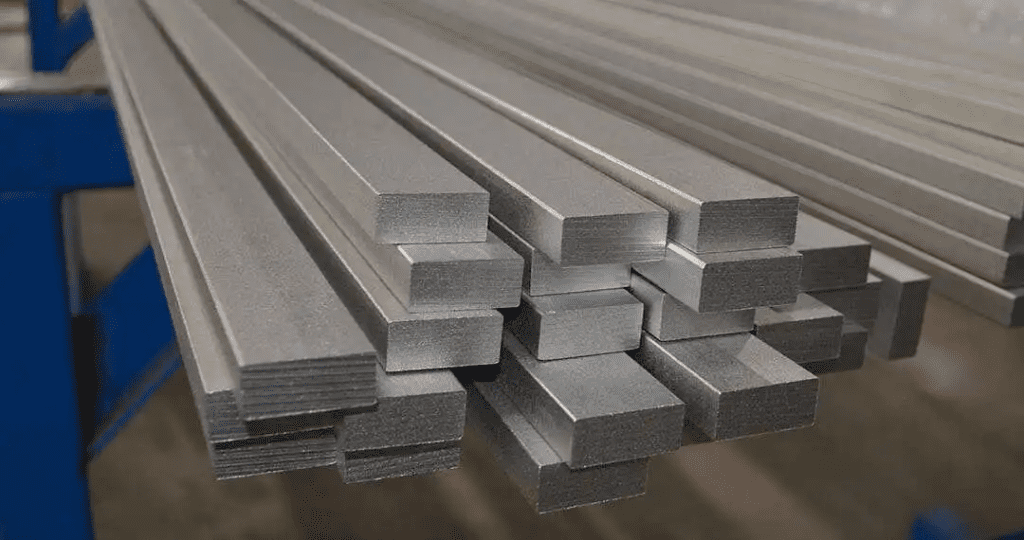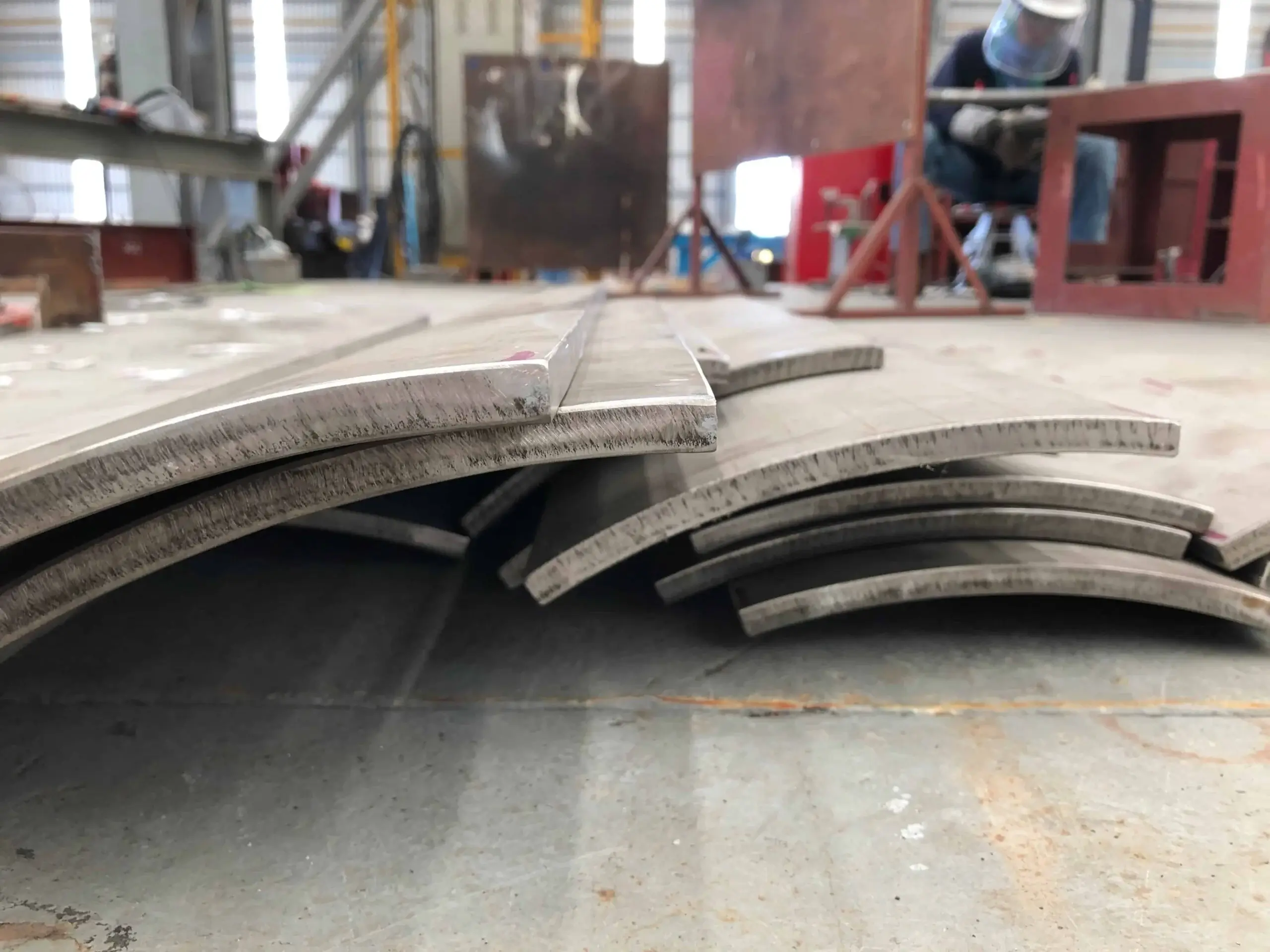Inconel, Hastelloy, and other nickel-based alloys and superalloys are increasingly being used in many industries. These alloys are high-strength and can withstand great stress and high temperatures. They are also incredibly resistant to chemical corrosion and high heat and pressure scenarios that can strain most metals, and increase the corrosive properties of many chemicals. High strength paired with corrosion resistance has made them highly sought after in everything from aerospace to the oil and gas industry. While these metals are increasingly popular for engineers across industries, they are less popular with those who actually have to work with them. Their high strength makes them very tough to work with and to cut.
Metal cutting methods for superalloys aren’t unique to these alloys. They’re the same metal cutting methods employed for softer materials modified to deal with some of the side effects of superalloy strength. It’s possible to cut superalloys with bimetal cutting tools if one is impatient, has a cavalier attitude, and has an economy-sized pack of blades. However, assuming one wants to produce accurate cuts and still have operational cutting tools afterwards patience is a requirement, and carbide blades and bits are recommended.
How Cutting Superalloys Differ From Regular Metals
Most commonly, superalloys are alloys of either nickel, nickel-iron, or cobalt that share the trait of combining hardness and exceptional tensile and compressive strength with the ability to maintain that strength in temperatures above 1000°F or 540°C. Falling within this category is a dizzying array of metals. Inconel, one of the most commonly found superalloys has at least eleven different formulations commonly available. Another, Hastelloy, has twelve. In addition to nickel and cobalt alloys, there actually are aluminum and titanium superalloys in use; they just aren’t common.
The side effect of this dizzying array of superalloys, and variants of each type of superalloy is that it’s close to impossible to have a definitive guide to cutting them. It will take some experimentation to develop parameters for metal cutting methods that consistently yield satisfactory results. A key takeaway with near universal applicability to superalloys though is that due to their high strength, they don’t chip cleanly under a bit or sawtooth. Since metal chipping is a key element of removing heat in the cut or grind zone heat builds up quickly when cutting superalloys. This can be very damaging to tooling with heat build-up, seriously degrading the cutting qualities of a tool.
Since superalloys are by definition heat resistant, it is unlikely that this heat build-up will degrade the material quality of the workpiece, but it can degrade the surface quality of the workpiece. A less than desirable outcome for materials that are used to make the spinning bits of jet engines. Nevertheless, this heating was long seen as a desirable metal cutting method for superalloys.
|
Buy Certified High-Quality Metals for Industrial Solutions |
||
|
New Aluminum |
New Steel |
New Stainless Steel |
 |
 |
 |
| Reliable supply: Consistent, certified aluminum stock you can trust. High-quality material: Superior-grade aluminum for precision needs. Custom cuts: Accurate cuts down to thousandths of an inch. |
Durability and strength: Reliable for projects needing long-lasting, tough materials. Cost-effective: Quality steel that offers strength without breaking the bank. Custom cutting: Precise cuts tailored to exact needs with top-tier cutting tools. |
Sustainability: Highly eco-friendly as the most recyclable metal on earth. High durability: Resistant to corrosion and wear, ensuring long-lasting performance. Custom precision cuts: Tailored to your specifications with quick, accurate results. |
Metal Cutting Methods for Superalloys
The old rule of thumb for cutting superalloys was to clamp the workpiece firmly in place and be aggressive with tool speed. While the operator should stick within parameters, they should try to stay at the upper end of those parameters. The localized heat build-up—above 1000°F—would actually reduce the strength of the material and make chipping a little easier. Unfortunately, cemented carbide, nitride, and tungsten tooling also starts to fail at those temperatures and the operator would have to monitor tooling closely to ensure that wearing tools weren’t reaching the point of catastrophic failure.
The new rule of thumb is to keep things shallow wherever possible. Reducing the amount of material being removed in a single pass encourages chipping allowing for better moderation of heat, less wear on tools, and better surface qualities for the workpiece. It also allows for low to moderate speeds for the tooling further reducing heat and wear. Other things that need to be kept in mind when working with or cutting superalloys are:
- Tool Choice: As mentioned previously, common bimetal blades are capable of cutting superalloys. However, they are far from the best choice. A variety of nitride and carbide that provide a surface that is harder than even superalloys provide a better choice. These are expensive, though, and care must be taken to ensure their optimal use to avoid needlessly burning through these bits and saws. Additionally, tools that are purposely fluted and crafted for these superalloys are available.
- Tool Speed: While higher tooling speeds do indeed tend to work better than lower ones, they may yield less than optimal results for both the workpiece and the tools. The optimum metal cutting methods are heavily dependent on the material being worked, the geometry of the cuts being made, and the tooling it is being worked with. Finding the optimal tool speed for each purpose takes experimentation, and effort to refine parameters.
- Coolants and Oil: Coolants like machining oils and heavy machining oils are one of the best ways to remove heat when applying metal cutting methods to superalloys or other materials. This can extend the life of saws and other tooling when cutting or working with superalloys.
Unfortunately, there are no totally universal metal cutting methods for superalloys. While they are not new materials they are increasingly being used in roles where they are new and unfamiliar. Meeting the standards of modern industry where operational environments and final specification are both growing more extreme require these high-strength and high-temperature alloys. This means that more metalworkers and fabricators in industries from petrochemicals to semiconductors are trying to develop parameters to reliably machine metals whose properties mean they can reliably survive high explosive detonations.
Developing metal cutting methods that reliably cut superalloys to size and then developing parameters that can optimally work them into spec is a tall order that can’t be accomplished quickly.
One potential area for saving time when working with superalloys is to leave the metal cutting methods up to the professionals. Precision industrial metal sawing services can cut superalloys and other high-strength metals into process-ready sizes with considerable speed. Leaving fabricators and machinists free to develop the parameters needed to produce the optimal part.
Industrial Metal Service is the metal supplier you can count on for precision-sawn aluminum, stainless steel, and superalloys. Our Amada saw with pulse cutting technology can cut high-strength metals like titanium and superalloys up to 20.8 inches thickness with incredible precision. We offer exceptional metal cutting methods to cut any metals you order from us into process ready pieces, and we offer both sawing services and transhipment of materials for metals purchased from other suppliers. Trust Industrial Metal Service for all your specialty metal needs.
 Angle
Angle Cast Plate
Cast Plate Diamond Plate
Diamond Plate Flat Bar
Flat Bar Plate
Plate Round Bar
Round Bar Square Bar
Square Bar Square Tubing
Square Tubing Round Tubing
Round Tubing Angle
Angle Channel
Channel Diamond Plate
Diamond Plate I Beam
I Beam Round Bar
Round Bar Sheet
Sheet Square tubing
Square tubing Round Tubing
Round Tubing Rectangular Tubing
Rectangular Tubing Plate
Plate Rectangular Bar
Rectangular Bar Rectangular Tubing
Rectangular Tubing Round Bar
Round Bar Sheet
Sheet Square Bar
Square Bar Square Tubing
Square Tubing
